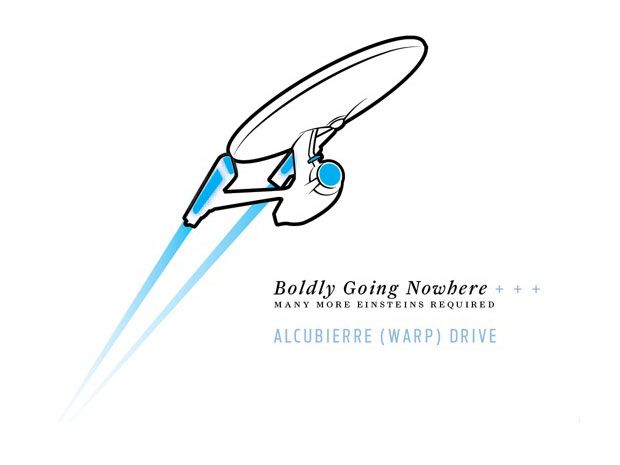Warp Speed, Mr. Sulu
If it can push a spacecraft, engineers are trying to harness it to fly through space
Here are 12 types of space propulsion that are currently on the drawing board. Some day, one of these technologies may power the spacecraft that takes humans to Mars. Illustrations by MCKIBILLO
Yes, We Can! Propulsion Options Within Reach
Chemical Rocket
Fuel and oxidizer ignite in a contained explosion.
+ Proven technology, ample performance data.
– Inefficient; spacecraft must carry lots of propellant.
Nuclear Thermal Rocket
Heat from a nuclear reactor accelerates a propellant.
+ More efficient than chemical rockets; reactor design is familiar.
– Exhaust is radioactive, making it hard to test on Earth.
Plasma Thruster
Electromagnetic waves convert a gas propellant into plasma
+ Speeds can be finely tuned; very efficient.
– Need a nuclear reactor to travel interplanetary distances.
Ion Thruster
Electric fields ionize and accelerate xenon gas
+ Commercially available; satellites and space probes use them.
– Too small, and a bundle of them might be too heavy and less efficient than a plasma thruster
On the Docket: Funky Concepts for the Future
Space Elevator
Laser beams power cars climbing up a carbon nanotube ribbon
+ A track from Earth’s surface into orbit promises cheap and easy access to space.
– Could be damaged by space debris.
Beam Propulsion
Space stations generate plasma beams to propel spacecraft
+ The rocket’s onboard propulsion system is small.
– Must position the nuclear-powered stations beforehand.
Tether Propulsion
Slingshots in Earth and Mars orbit fling spacecraft back and forth
+ Thrust comes from a planet’s magnetic field, not a propellant.
– Impossible to test on the ground.
Magnetic Sail
A magnetic field interacts with plasma particles in the solar wind
+ Can travel through the solar system without much propellant or power.
– Probably too slow for human transport; hard to test on Earth.
In Your Dreams, Nerds: Significantly Speculative Designs
Fusion Rocket
A fusion reactor heats and ejects fuel
+ Extremely efficient.
– The reactors are heavy, so the thrust-to-weight ratio is currently unworkable.
Antimatter Rocket
Positrons annihilate electrons to produce energy
+ Ten milligrams of positrons might be enough to take a crew to Mars.
– Antimatter is very hard to produce and contain in the required amounts.
Boldly Going Nowhere: Many More Einsteins Required
Alcubierre (Warp) Drive
Fabric of space bends into a warp bubble
+ Space contracts in front of the rocket to bring the target closer and expands behind the ship to push it forward.
– No one knows how to create a warp bubble or generate the insane amount of energy involved.
Wormhole
Fabric of space folds to form a shortcut
+ Might enable time travel, too.
– Could require matter with negative mass to construct; also, stable wormholes may not exist.
This article is an updated version of the slideshow “Warp Speed, Mr. Sulu,” posted June 2009.
